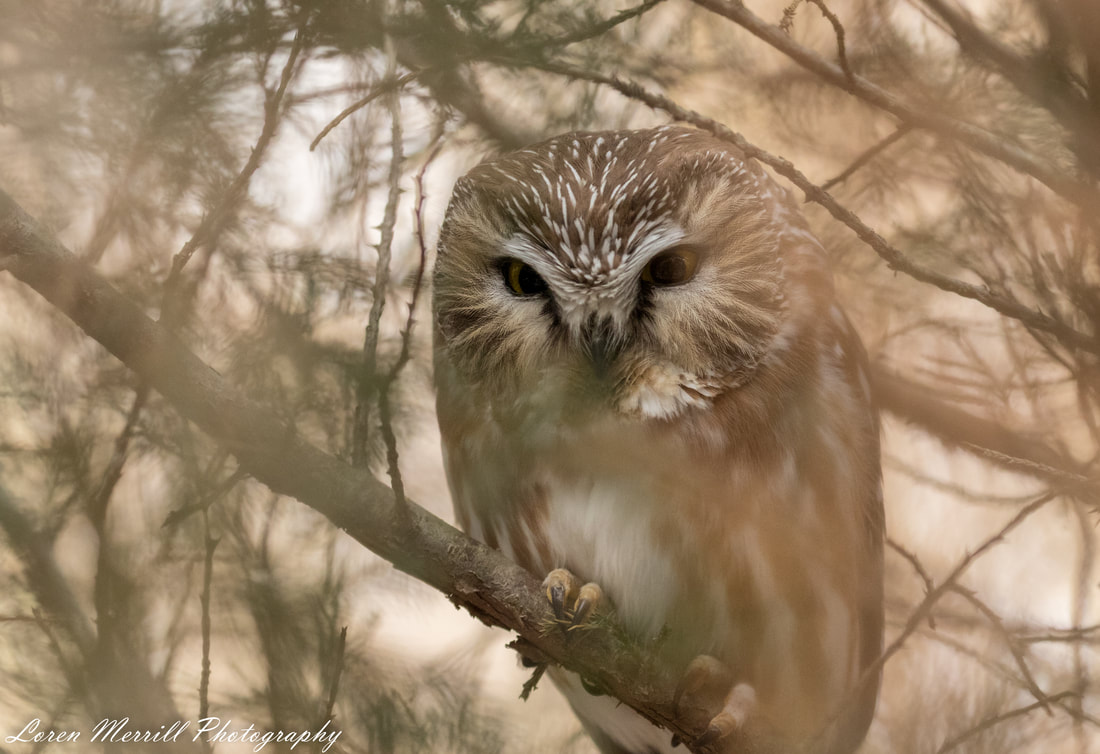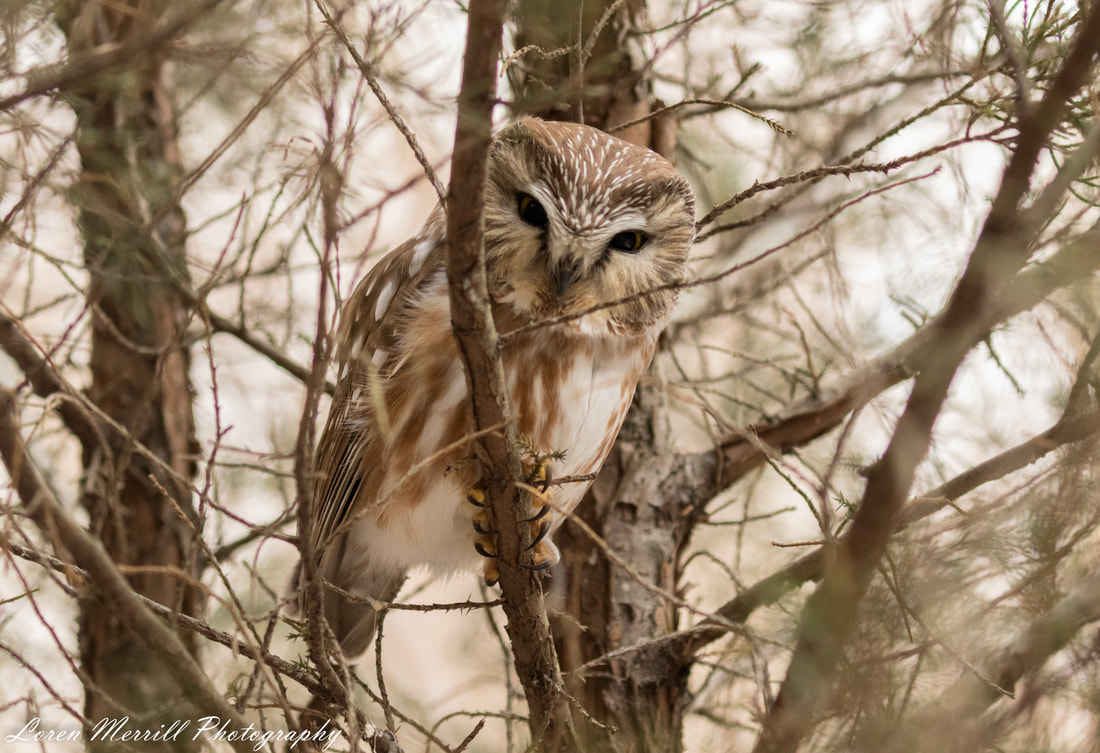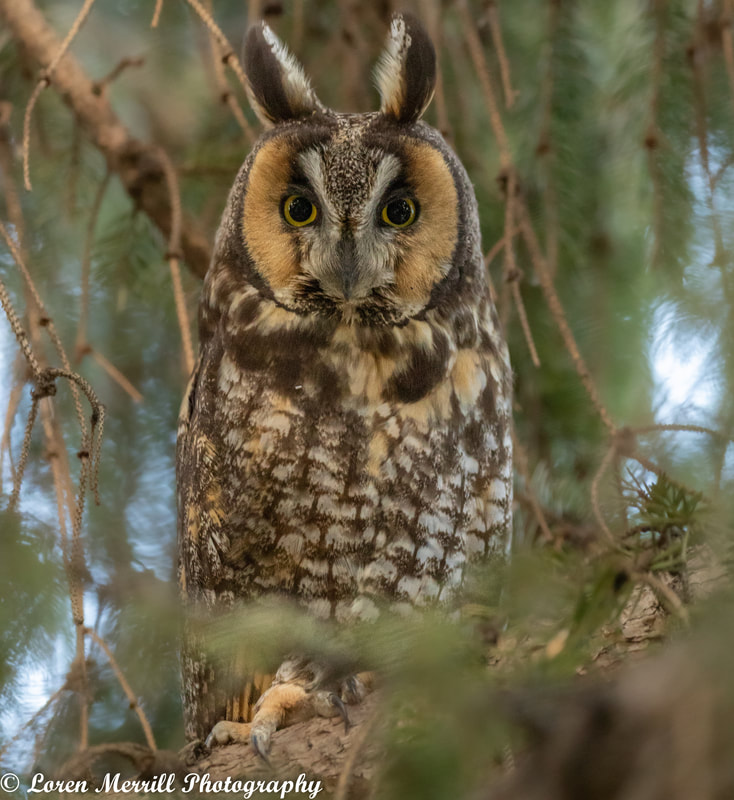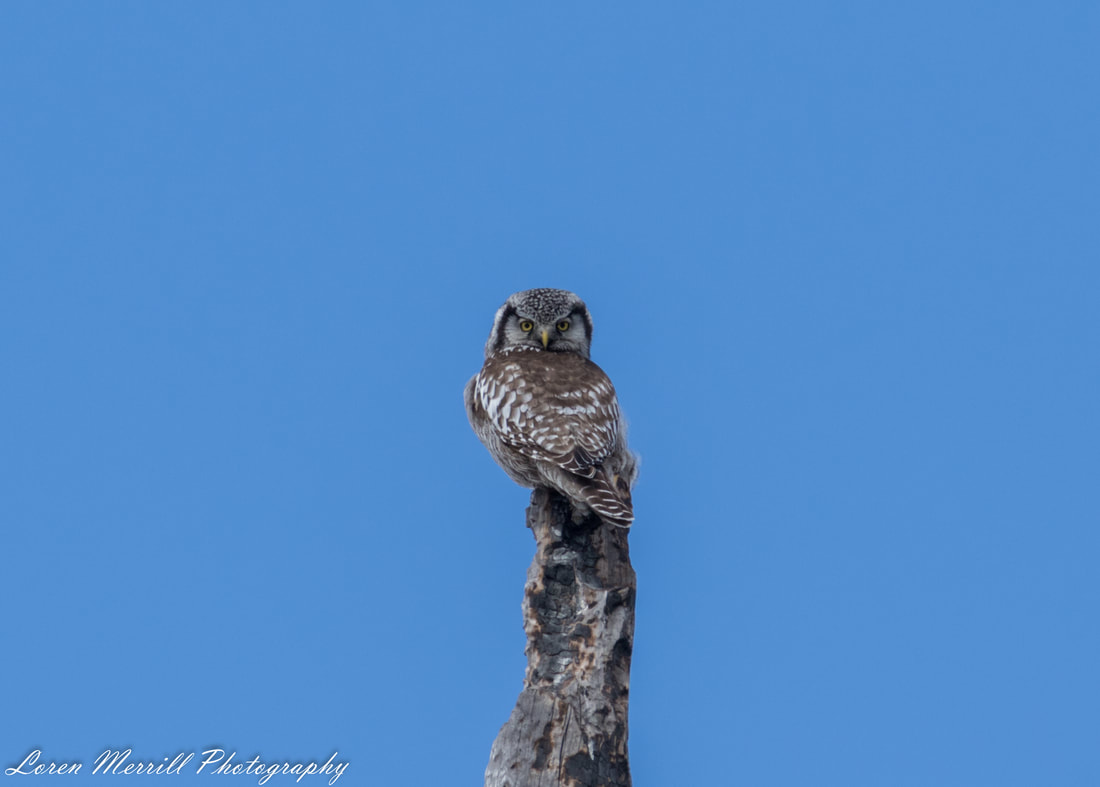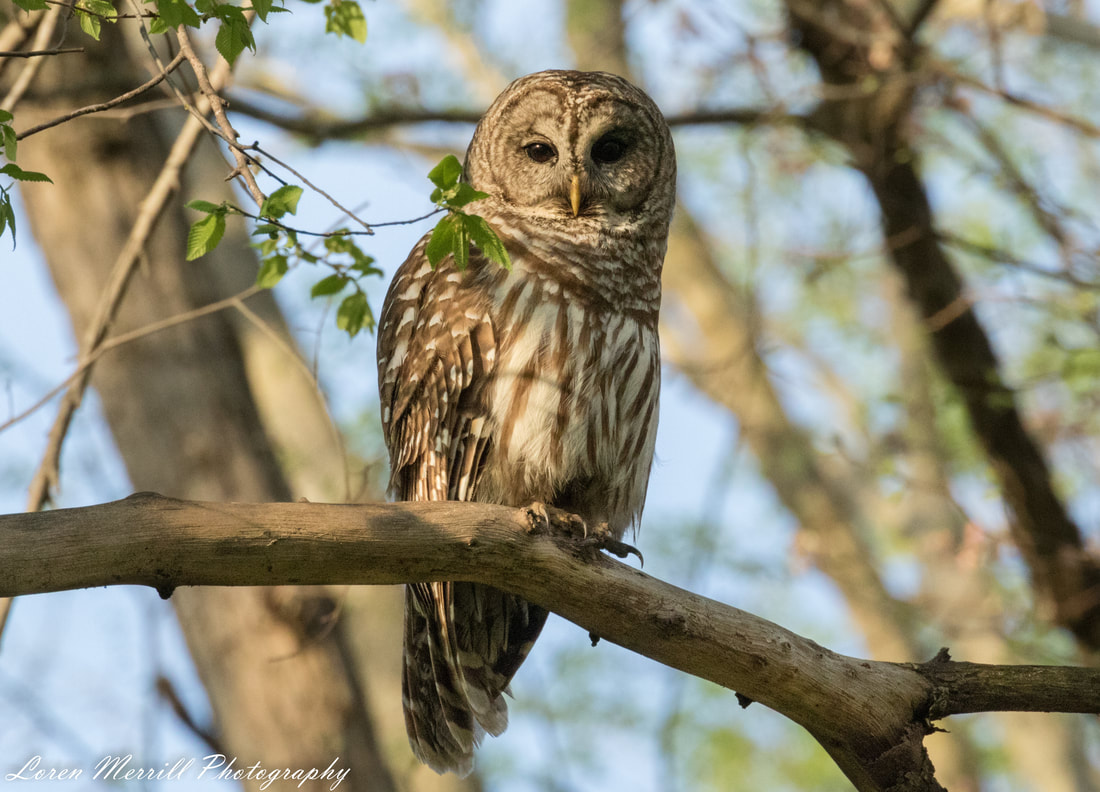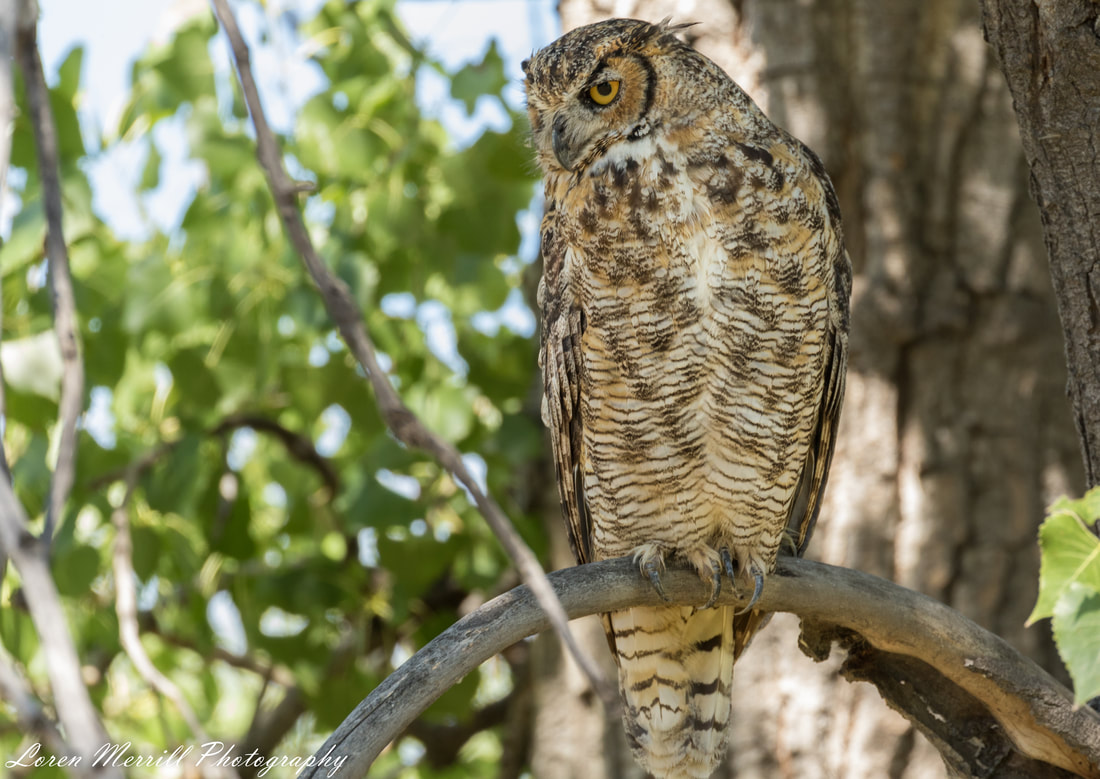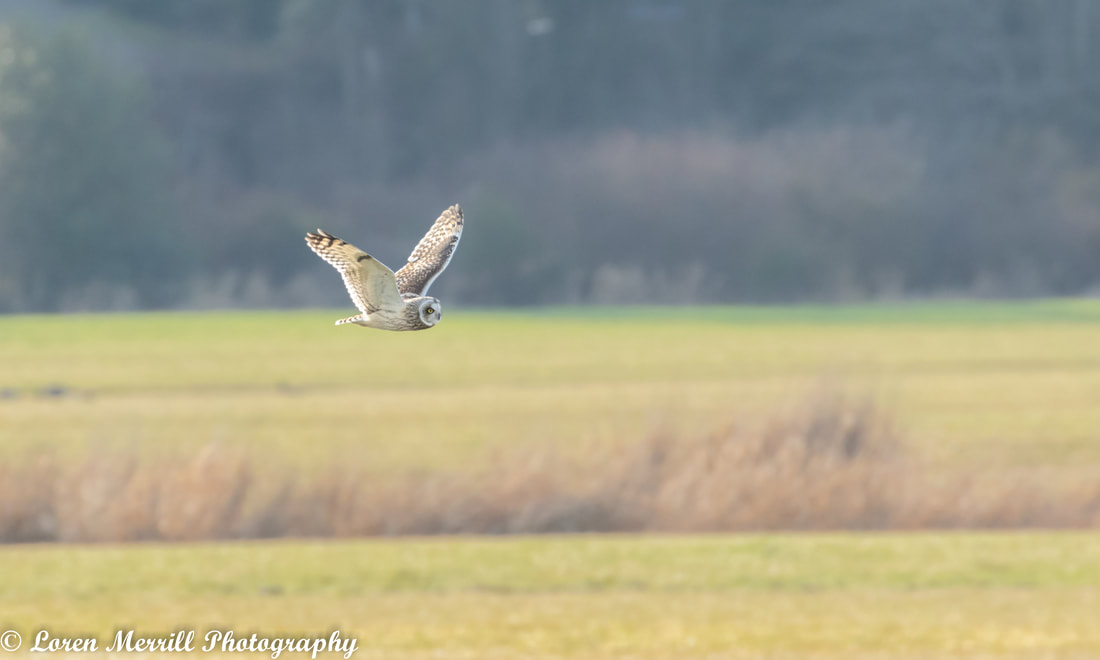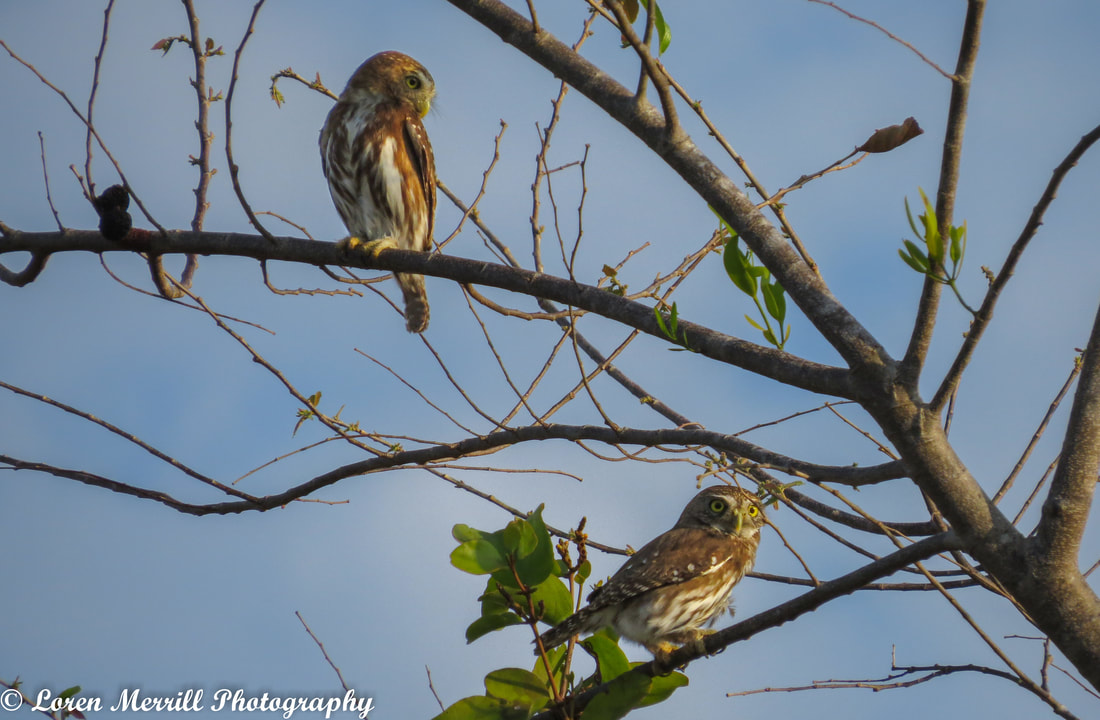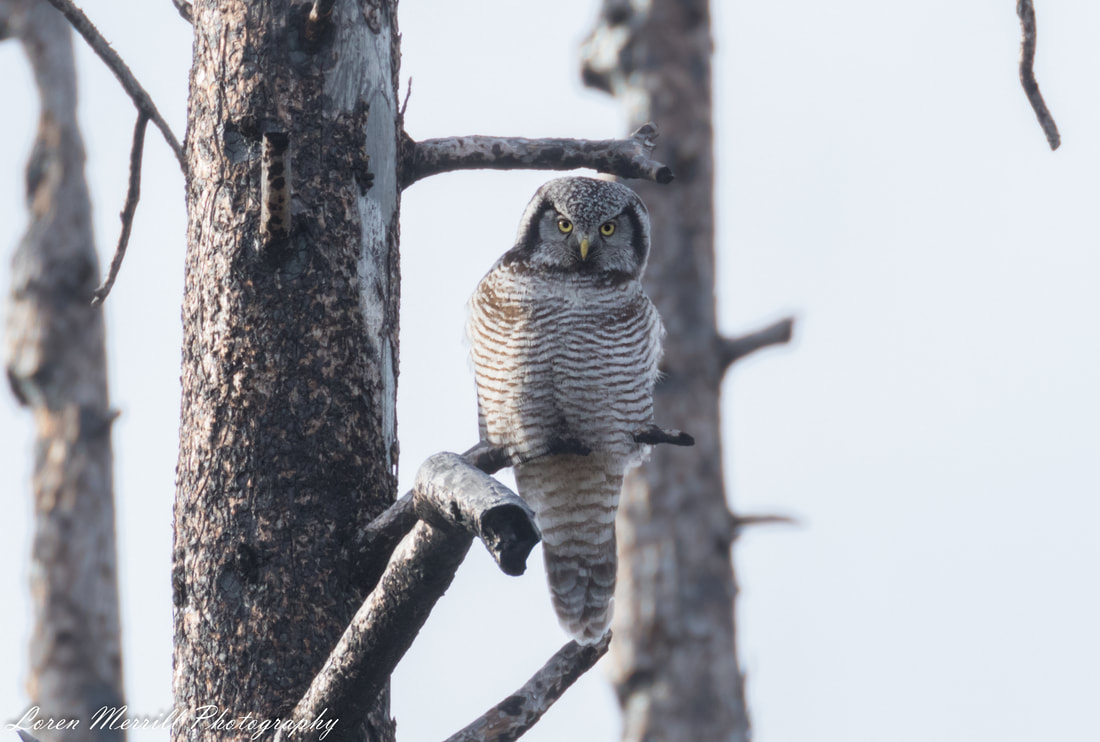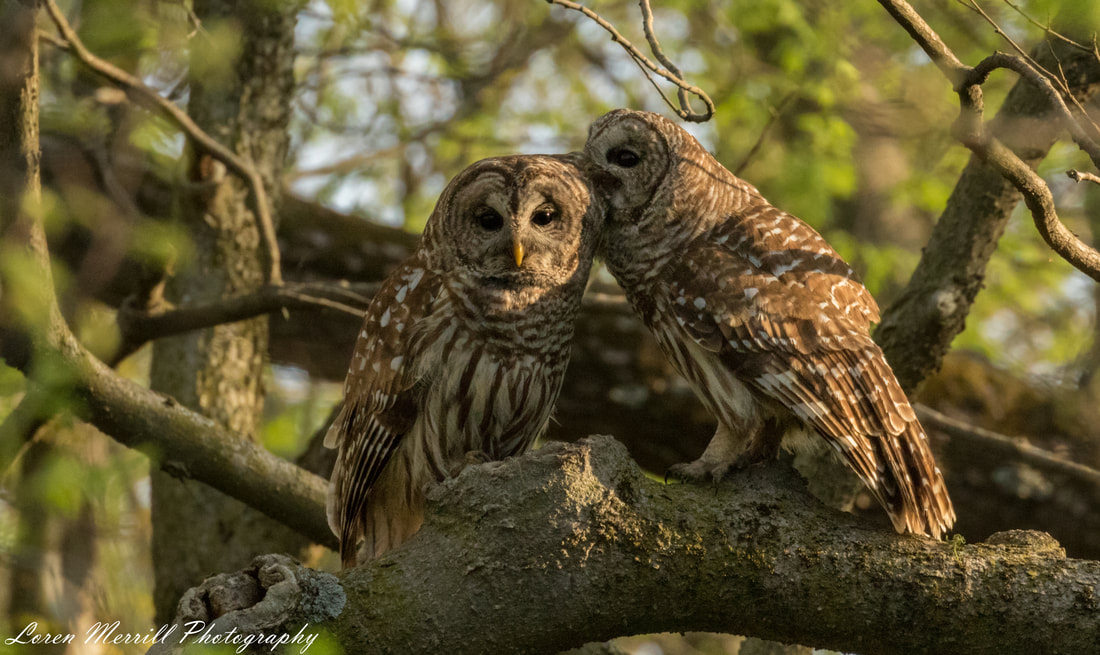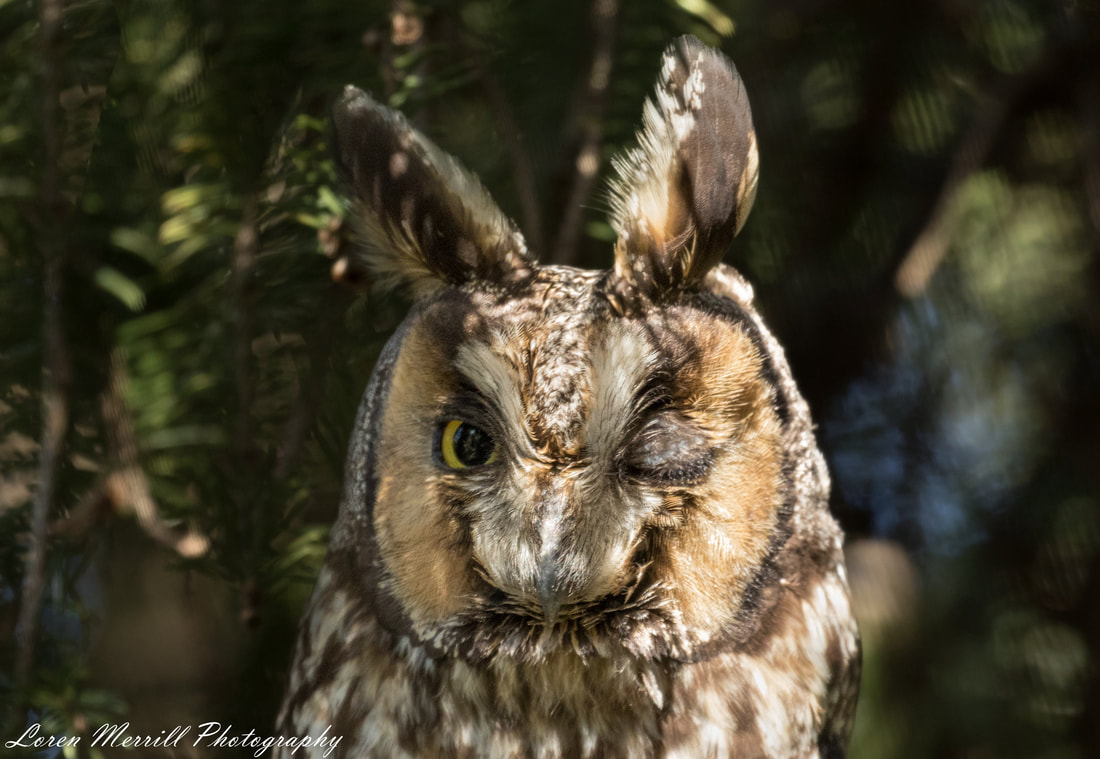|
A few days back, I went out for a late afternoon walk on one of the dirt roads near our place. We live a few miles from the nearest paved road, and once winter hits, some of the mountain roads around us become impassable to vehicles but make for nice snowshoeing or walking trails. The walk was pleasant, but cold and mostly quiet. A flock (or “murder”) of crows was circling far off across the valley, getting ready to head to their communal nighttime roost, and a pair of black-billed magpies called quietly from atop some tall Ponderosa pines. A set of relatively fresh mountain lion prints got me excited, but they appeared to be at least 24 hours old, and I saw no other evidence of the lion. I had turned around a little after sunset, and as dusk settled on the mountain, I heard a sound I’ve only heard a few other times in my life; the “too-too-too” song of a northern saw-whet owl. For those not familiar with this bird, it is one of the smallest and most abundant owls of the northern US and southern Canada. Despite their abundance, few people ever get a chance to see these birds because of their cryptic behavior and plumage. As is the case for most of the approximately 220 owl species worldwide, saw-whets are nocturnal and spend the daytime hours roosting in well-concealed spots. Once the daylight fades, these little hunters become active and leave their roosts to search for a meal. Small mammals are their favorite prey, but they will also go after small birds like chickadees and kinglets, as well as the occasional invertebrate. In early February a few years ago when we were living in Illinois, a fellow birder found a saw-whet owl that had likely migrated down to the area for the winter. Like many others, I am especially fond of owls, so I could not resist the urge to see the owl myself. Despite the fact that the owl was likely to be in the same general vicinity in which it had initially been located, finding the robin-sized raptor was far from a given. It had been found in a large cluster of red cedars spaced out over a couple hundred square meters, so I knew it would be a little like finding a needle in a haystack. But unlike needles, owls often leave some hints as to their whereabouts in the form of white-wash (aka—bird poop) and regurgitated pellets. These pellets are composed of the hard-to-digest components of their prey- bones, fur, feathers, feet, etc.- and pellets from large owls like great-horned owls and barred owls will often contain the complete skeletons of small mammals that they’ve consumed whole. Once I had navigated to the cedar stand, I began searching under trees for white-wash and pellets. I found both in good quantities, indicating that the owl had been in the area for a while. This was a good sign that the owl was still around, but with these “hints” in many areas, it made the search a bit more challenging. After 30 minutes or so I came to a cluster of small cedars that were bunched closely together, and I had to bend way down to get in. Hunched over, I wedged myself in among the thin trunks, and continued my search. I happened to glance back over my shoulder at one point, and just a few feet away, the tiny owl sat on a branch, staring at me with saucer plate eyes. I was startled at how small the owl appeared; it seemed no bigger than a sparrow. I slowly backed away so as to give it some space, but the owl appeared to be almost disinterested in me. Its gaze passed from me to the ground, and the owl began watching a clump of dead leaves that was shaking in the breeze. Even though saw-whets are nocturnal, this little predator appeared to be ready to take advantage of a daytime meal if it presented itself. But the leaves did not morph into a small mammal, and the owl eventually closed its eyes to nap, despite the close proximity of a giant lumbering primate (me). As mentioned above, most owls are nocturnal, and these nighttime hunters possess a suite of remarkable traits that help them find and capture prey in the dark. One such trait that allows them to sneak up on prey is their silent flight. The wings of most birds create noise when air passes over them, as during flight, and the bigger the wing and faster the flight, the louder the noise. Many prey species of owls, especially small mammals, have excellent hearing, and they would be alerted to the presence of an approaching owl in the relative quiet of the night if owls made as much noise as a normal bird their size. But many nocturnal owls, especially those that prey upon small mammals, have evolved the equivalent of silencers on their wings. These sound-dampening features come in the form of comb-like serrations on the leading edge of the flight feathers, the flight feathers’ overall velvety texture, and fringes on the trailing edge of the wing feathers. Together, these features work to reduce turbulence and streamline airflow over the wings, thereby producing the mostly silent flight. Owls also have very large eyes which allow for excellent vision even under very low light conditions. Interestingly, their eyes are tubular in shape (kind of like a telescope) rather than rounded like ours, and as a result, they are relatively fixed in their sockets. This means that when they want to look at something new, they have to move their entire heads. Owls are famous for their neck flexibility which allows them to rotate their heads 270 degrees. They can do this because, unlike humans who have two socket pivots connecting the head to the rest of the body, owls have only one. But this isn’t the only obstacle they have to overcome; if we twisted our necks around like an owl, the blood vessels and arteries in our neck would get twisted and damaged, resulting in clots and possibly embolisms. Owls have enlarged gaps in the bones through which the vessels and arties pass, as well as increased artery size at the base of the head. These features provide extra protection for the blood vessels, and allow for extra blood to reach the brain, so that when blood flow is restricted when the head is turned around, the brain still has a rich supply of oxygen. One of the other prominent features of many owl faces is the flat, disk-like shape. These facial disks are no mere accident of design; they help collect sounds and funnel them to the owl’s ears. Species within the barn owl family (Tytonidae) have the most pronounced facial disks among the owls (they appear almost heart-shaped), and not coincidentally, they also have the best hearing. In addition to their facial disks, barn owls have offset ears. That is, one ear is slightly higher on the skull than the other. This slight difference in ear location provides the owls with stereoscopic hearing and allows them to pinpoint the location of their prey based purely on sound. Experiments have shown that barn owls can do this from 20-30 feet away in a completely dark room. Not all owls have offset ears or heavily pronounced facial disks, however. The massive great horned owl, which is found across North America and even down into Central and South America, has ears that are symmetrical (so not offset) and relatively minor facial disks. They still have excellent hearing, but they rely a bit more on visually locating their prey. Studies on prey capture by great horned owls have shown that they do much better in open areas where they can see the prey. They also are more successful when there is moonlight, and a full moon is bad news for great horned owl prey. Great horneds have been known to capture and kill everything from mice and voles, to skunks, hares, opossums, ducks, and even other raptors, including other owls, adult osprey and red-tailed hawks. Indeed, hunting great horned owls are probably the biggest threat to large nesting birds and their offspring. Even people need to be wary of great horned owls, although not because we’re on the menu. Nesting great horneds are fiercely protective and will attack people that get too close to their nest, clubbing them with balled talons, or lacerating them with open talons. Great horned owls can also be exquisitely tender, however, and you can watch them at their nest via one of the many “nest cams” in operation. They begin nesting as early as late January/early February, so these cams will become active soon. On the other end of the owl spectrum are the diurnal owls, which, in North America consists of the northern and ferruginous pygmy owls, the northern hawk owl, and to some extent, the burrowing owl (which can be active at any hour of the day or night). These species generally lack the special adaptations for nighttime hunting, such as facial disks, offset ears, and silent flight. Other owls will forage during the day on occasion or when conditions necessitate it (like summertime in the far north when there is no nighttime), and a few are primarily crepuscular (such as the short-eared owl, whose buoyant flight makes it look like a giant moth bobbing over open fields and marshes at dawn and dusk), but these four species have fully embraced the day. The pygmy owls and the hawk owl are active hunters of other birds and small mammals, whereas the burrowing owl eats a lot of invertebrates (with some small mammals, lizards, and birds thrown in for variety). Despite the overlap in operating hours, spotting one of these diurnal species is still a relative rarity for most people. While seeing owls is uncommon, hearing them is a bit easier, and late January through March is a great time to go owling as species begin singing to establish territories, reestablish pair bonds, or attract a mate. Many people don’t need to go far to listen for owls; a number of species have acclimated to humans and can be found in backyards, city parks, or even urban centers. One of my first owl experiences occurred probably 30 years ago in a green space called the Arnold Arboretum, close to where I grew up in Boston. This urban park hosted a pair of great horned owls that would begin calling just before dusk in the late-winter months. Male great horned owls are smaller than females (a trend common in most raptors) but they have a deeper hoot, and the two owls would duet from the depths of a stand of old white pines. On a few occasions I ventured into the dark understory of the pines to look for the owls, but I would only ever catch a fleeting glimpse of a large shadow lifting off from a high branch and vanishing back into the woods. These tantalizing glimpses provided sufficient fuel to kindle a life-long passion for these amazing raptors, and I am always on the lookout for any signs that these secretive birds may be nearby. Next post: TBD
Subscribe to the Newsletter: If you would like to get notifications about when new posts are up and other tidbits related to the blog, sign up for the View Out the Door twice-monthly newsletter. Just email viewoutthedoor “at” gmail “dot” com with the subject header SUBSCRIBE.
0 Comments
Leave a Reply. |
About the author:Loren grew up in the wilds of Boston, Massachusetts, and honed his natural history skills in the urban backyard. He attended Cornell University for his undergraduate degree in Natural Resources, and received his PhD in Ecology from the University of California, Santa Barbara. He has traveled extensively, and in the past few years has developed an affliction for wildlife photography. Archives:
|
